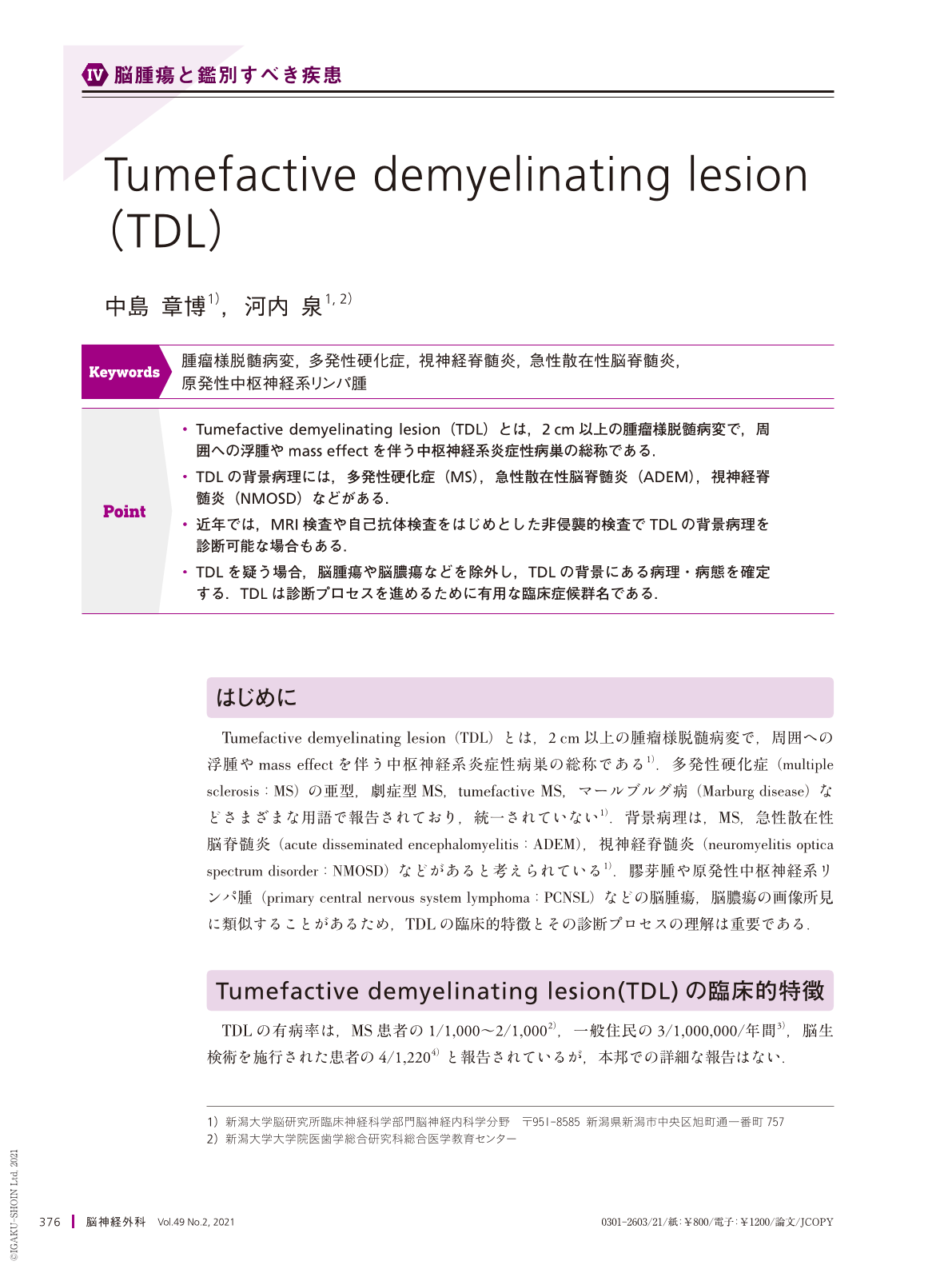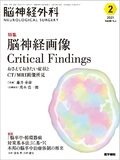Japanese
English
- 有料閲覧
- Abstract 文献概要
- 1ページ目 Look Inside
- 参考文献 Reference
Point
・Tumefactive demyelinating lesion(TDL)とは,2 cm以上の腫瘤様脱髄病変で,周囲への浮腫やmass effectを伴う中枢神経系炎症性病巣の総称である.
・TDLの背景病理には,多発性硬化症(MS),急性散在性脳脊髄炎(ADEM),視神経脊髄炎(NMOSD)などがある.
・近年では,MRI検査や自己抗体検査をはじめとした非侵襲的検査でTDLの背景病理を診断可能な場合もある.
・TDLを疑う場合,脳腫瘍や脳膿瘍などを除外し,TDLの背景にある病理・病態を確定する.TDLは診断プロセスを進めるために有用な臨床症候群名である.
Tumefactive demyelinating lesion(TDL)is defined as a large lesion, size >2 cm, mass effect, perilesional edema and/or ring enhancement. TDL could occur in multiple sclerosis(MS), neuromyelitis optica spectrum disorder(NMOSD), acute disseminated encephalomyelitis(ADEM)or other immunological diseases. Non-invasive methods including MR imaging and assay of several autoantibodies(e.g. aquaporin-4 autoantibodies)are recommended when each TDL is identified. The radiological findings on MRI are characterized by size >2 cm, mass effect, perilesional edema, T2 weighted hypointense rim, peripheral diffusion restriction, open ring enhancement, vascular enhancement, and central vein sign. When atypical clinical and radiological presentations are present in patients with TDL, diagnosis may necessitate brain biopsy due to exclude alternative pathology(e.g. primary central nervous system lymphoma). Because treatments and outcomes for patients with TDL are dependent on each disease etiology including MS, NMOSD, ADEM or others, we should always clarify the entire picture behind the disease.

Copyright © 2021, Igaku-Shoin Ltd. All rights reserved.


